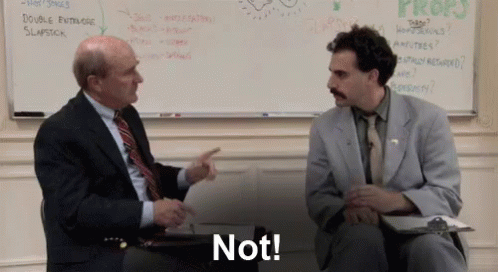One world’s terror is another
company’s gain

Shares in the Massachusetts-based medical technology company, iSpecimen (ISPC), got a booster on Friday, gaining 86.27% on the day. This was preceded by a 22.67% dip the previous day, the only blip in its November ascent as a number of factors are keeping it healthy.
- November’s climb was kicked off by their quarterly checkup, revealing steady growth throughout the year. For context: The $2.7M in revenue was a 21% increase from the year prior and YTD is a 57% increase from the first 9 months of 2020. Looks like they’ve been taking their vitamins.
- Shares in ISPC shot up significantly after company PR released a statement announcing they had won government contracts to supply researchers with specimens for ‘rona research.
- It also doesn’t hurt that Omicron hit the scene within a similar window. ISPC’s niche as an online network of biospecimen providers and researchers logically appears well poised for its arrival. This likely led to the increased excitement on the floor Friday before close.

iSpecimen is certainly looking healthy as a horse at the moment, climbing upwards of 280% over the last five days. A healthy Q3 report with steady growth over the previous year of revenue, in tandem with the recent acquisition of ‘rona-related government contracts indicates the company is hitting a stride. Also, let’s be frank: Covid (and therefore Covid research) does not appear to be going anywhere… unfortunately.
Sh*t hits the fan

The newest Covid variant “Omicron”, which sounds a lot like a villain in a Transformers movie, scared the sh*t out of the financial markets on Black Friday. *Cue all Fintwit nerds saying stocks are at a discount and to BTFD* The CBOE Market Volatility Index (VIX), or otherwise known as the market’s fear barometer, spiked 54% to close at 28.62. Not surprisingly, sectors associated with travel, hospitality, gaming, and energy were hit hardest. The biggest gainers were biopharmaceutical and biotechnology companies, as well as stay-at-home stocks like Zoom (ZM) and Peloton (PTON).
- IWM, which tracks the Russell 2000, dropped 4.6%.
- JETS, the airline ETF, and USO, the US Oil Fund, finished Friday’s trading session lower by 7.2% and 11.6% respectively.
- Biopharma and biotech ETFs BBH and IBB moved higher by 3.5% and 1%, while ZM and PTON saw 7.2% and 5.7% gains.

If you watched the talking heads on any of the major financial networks, you would think the world was coming to an end. In reality, the S&P 500 ETF (SPY) finished Friday down 2.7%. Even after that move, the broad market is still up year-to-date. What many fail to understand, including the so-called financial gurus on TV and social media, is that in order for a healthy market to exist over time, you need to clear out the dead wood (overvalued companies), and have days like Friday’s. Last week’s down move may just be the beginning of a larger correction. Then again our newly re-elected lord and savior Jerome Powell may just keep the money printer going brrrrrr indefinitely.
Inflation is Transitory…

The Fed’s minutes from their November 2-3 meeting were released Friday and they acknowledged what anyone with half a brain has known all along: inflation is not transitory. In their own words, “inflation pressures could take longer to subside.” No sh*t Sherlock. The usual suspects, ongoing labor and supply shortages, are to blame. According to the Consumer Price Index, the yearly rate of inflation has exploded from just over zero a year ago to a 31-year high of 6.2%. Other key points from the Fed minutes…
- Fed officials approved a plan to taper their $120B/month bond purchasing program by $15B/month. This would then end the bond purchases by mid-2022.
- “Various” Fed officials said that they should be ready to increase the rate of bond tapering if inflation does not improve by the December 14-15 meeting. Not to be a Debbie Downer but it’s not looking good.
- Many Fed members see a faster end to their bond purchasing program as a way to put them in a better position to raise interest rates above its current level of zero.

It can be argued that bringing rates to zero at the beginning of the pandemic was necessary in order to keep the economy from crashing. It can also be argued that by keeping rates at zero over the last 18 months, the Fed has unintentionally created the inflationary pressures that now permeate our everyday lives. Fed Fund futures at the CME have been pricing in a 0.25 basis point hike in June 2022. However, Omicron may push that rate increase back to Q3 2022. I’ll be watching any changes in the 30-Day Federal Funds futures to give me any insight into the Fed’s next move.